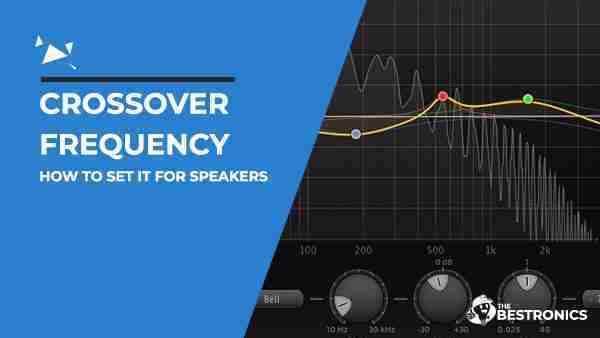For some people, the term crossover frequency is a new term to highlight sound improvement. The term crossover frequency refers to one such frequency in which the sound transitions from one speaker to another.

Well, that’s not the end! There is a lot more involved in crossover frequency, which we discuss below in the guide for beginners.
Introduction to Crossover Frequency
A crossover is an electrical or electronic system designed just to split the sounds from any musical source. It will, later on, provide excellent output for a particular speaker. The majority of speaker models with superior sound quality have at least one type of crossover built-in.
On the other hand, the cross frequency is a sound frequency point. After a specific point, the sounds will either effectively be blocked or reduced. At a specific reference point, a speaker’s output or the input to an amplifier is cut by 3 decibels (-3 dB).
Every speaker has its crossover frequency, which is generally set in the AV receiver by the processor. This process will filter away low-frequency content from speaker channels and redirect it straight to the subwoofer channel. You can call this whole process digital bass management. Upon further optimization, you can manually set the crossover frequency.
Component Vs Coaxial Speakers
What is the best level of cross-over frequency?
Generally speaking, a crossover frequency for speakers should be set at 10-15 Hz higher than the low-frequency extension for all individual speakers. This will allow the speaker to display the output in a wholly predictable and smooth manner with a subwoofer.
What is the best cross-over frequency for subwoofers?
Well, the crossover frequency for subwoofers needs to be 80 Hz (low pass). Well, this is a tremendous low-pass frequency to make sure that the subwoofer delivers the sound without any midrange sound effects. The best subwoofer on our list is the Klipsch R-100SW 10″ Subwoofer.
You will also find this frequency range best for the low-end bass.
Best 10-inch subwoofers
What is the best crossover frequency for center speakers?
The crossover frequency for the center speaker has to be within 56–60 Hz (high pass). In this frequency range, the low-end bass, which can cause some distortion, is generally filtered out. You will find this crossover to be the perfect middle ground between the midrange bass capability and the full-range sounds.
What is the best crossover frequency for two-way speakers and tweeters?
The crossover frequency for front speakers and tweeters has to be 3.5 kHz (high pass, or high/low pass). You should be getting the DS18 PRO-TW120B Super Tweeter in Black – 1″ to enjoy the best quality of sound results.
Below this range, the speakers start showing suboptimal performances.
What is the best crossover frequency for mid-range speakers?
Recommended cross-over frequency mid-range speakers have to be 1-3.5 kHz (low pass). Many of them do not deliver the best sound quality above this specific range. Therefore, make sure you are augmented with the tweeters to avoid any poor treble delivery. A 6.5″ Car Audio Speaker midrange is what we highly recommend!
How do I set the crossover frequency for speakers?
There are, therefore, no hard-and-fast basic rules that you need to follow. Just three steps, and you are all done with it. The steps are discussed below:
- Turn off the equalizer or the bass boost functions.
- Now you have to set the crossover switch to “LP,” or however it would be labeled for the lower pass.
- Lastly, adjust the crossover frequency control to the lowest setting, which needs to be 50 Hz for most amps.
For bookshelf speakers, you can utilize the unit centimorgan (cM) for measuring the distance between genes, which should be based on the offspring phenotype frequency. A centimorgan is 100 times the frequency of the crossovers in the offspring.
Conclusion
We hope that you have gained enough information about crossover frequency and its settings for different types of speakers with this guide. Adjust the frequency of your speaker and get the most out of excellent sound quality.

